
Reynolds Field Station Booth at Geological Society of America Connects 2025 Conference October 19-22, 2025 San Antonio, TX
RFS is pleased to announce the Reynolds Field Station booth at Geological…
Release Date: 11 Sep 2024 You can also view this press release at: newsroom.nmsu.edu
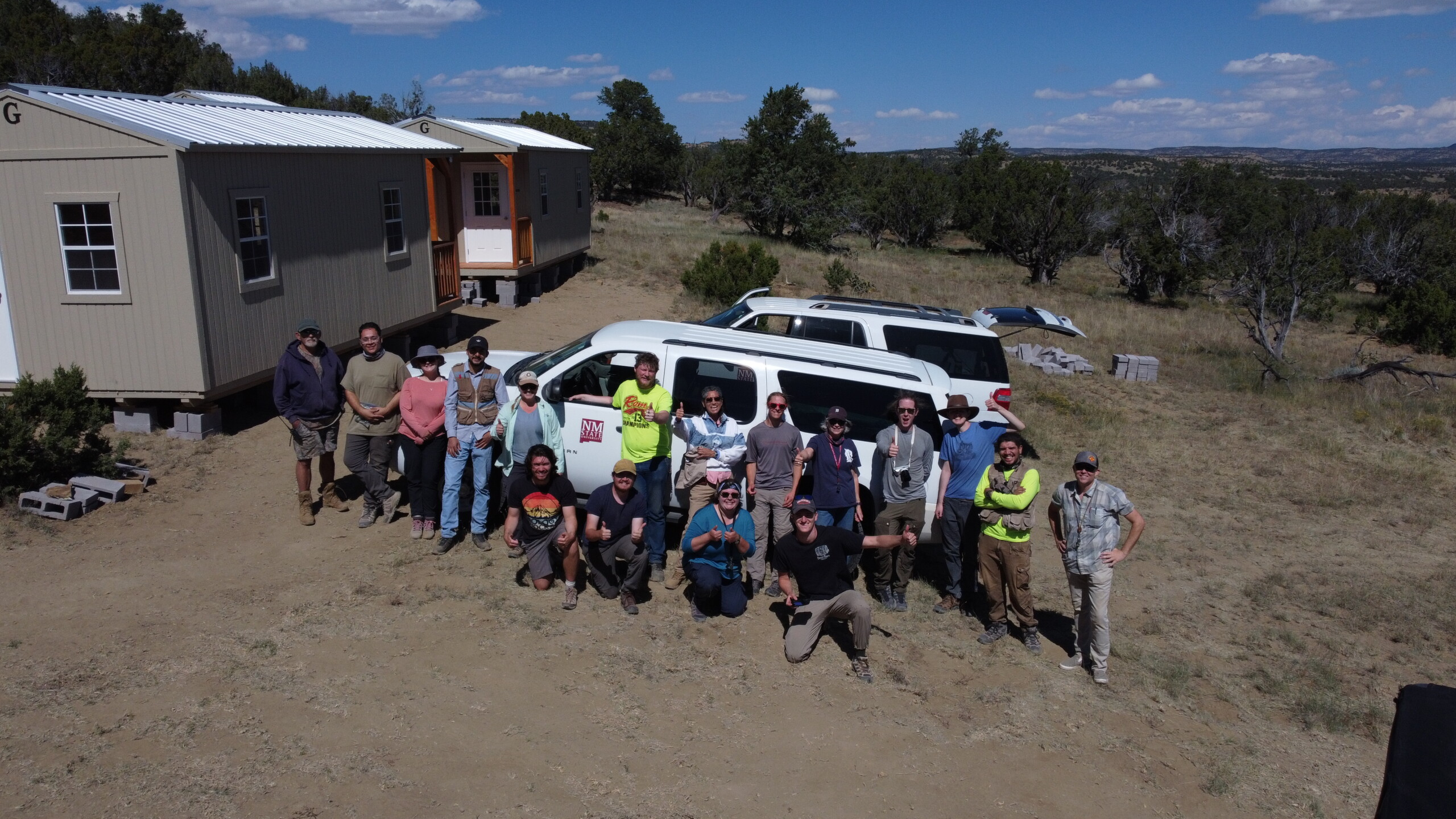
DCIM101MEDIADJI_0991.JPG
Imagine 280 acres of untouched nature in the mountains of west-central New Mexico with rocks dating back to the age of the dinosaurs, 85 million years ago when an ocean split the North American Continent in half. A geologist’s dream.
That’s the Reynolds Field Station for Education and Science Research (RFS).
An agreement between New Mexico State University and the RFS allows NMSU geology students have access to the station for research, field courses and educational outreach. Thanks to founder A-Lan Reynolds, RFS provides the infrastructure that supports geology students in gaining these skills as they train to enter the workforce in resource exploration, resource management, environmental and geohazard identification and remediation, and research. The Reynolds Field Station will provide a comfortable place to sleep, with water, sanitation, food and a place for collaboration on interpretations in the evenings.
“The geological sciences faculty and students we have worked with from NMSU exemplify the ideal multi-disciplinary perspective and creativity that we look for at RFS,” said Reynolds, founder and president of RFS. “The faculty have enthusiastically embraced working closely with our museum research partners on synergistic programs and has actively identified projects in which students can engage, perform research, and publish in furthering their careers.”
RFS is a 501(c)(3) public charity that exists to enhance the scientific understanding of current and future generations of researchers, students, institutions and the public. RFS has been collaborating closely with NMSU in the development of the Reynolds Field Station and supporting NMSU’s geological sciences department by funding donations for research assistants, travel expenses, laboratory expenses and teaching staff.
“A-Lan and her late husband, John, worked as exploration geophysicists, so when they bought the land in Catron County, they understood the scientific significance of the area’s geology,” said Nancy McMillan, recently retired NMSU geology professor and former department head who collaborated with Reynolds on the project. “It is a place of incredible geologic, biologic and anthropologic wealth where students can experience the intersection of the sciences.”
NMSU geology associate professor Brian Hampton is currently developing curricula to conduct field geology courses there, such as the capstone Geology Field Camp, and has already conducted a field trip to RFS for Tectonics of Sedimentary Basins. NMSU faculty and students are currently conducting independent study and master’s degree research at RFS, working on symposium papers and masters’ theses.
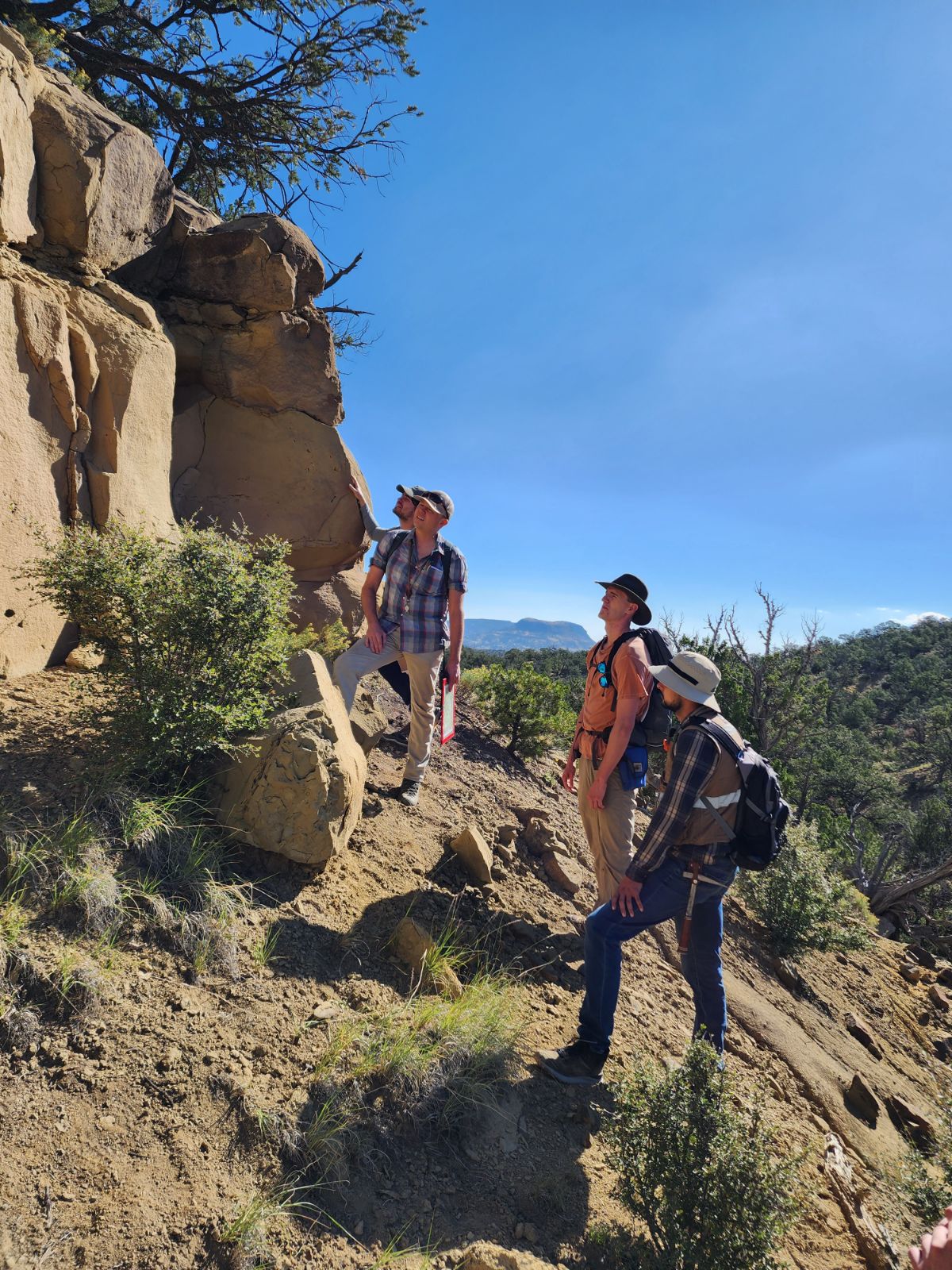
NMSU Graduate students from Tectonics and Basin Analysis Class with Dr. Brian Hampton examining a channel deposit in the Crevasse Canyon Formation
“Most people may not understand, but in geology if you have a field-based direction to your major, your capstone course, usually after graduation, is one of these two to three and oftentimes six-week field camps,” said Hampton. “With the facilities at RFS, we have a unique opportunity to bring our students to an area with access to a wide variety of geological formations within an easy distance. The facilities may also allow us to bring students from other universities out there as well.”
“From a field camp point of view, it makes for a really great base of operations because all around the field station there are just really beautifully exposed, classic New Mexico volcanics that students can examine,” said Jennifer Thines, NMSU assistant professor of geological sciences. “I mean, even some of the stuff in Socorro that’s maybe an hour’s drive away from the field station is world-class geology.”
Three NMSU graduate students are currently using the RFS facilities and the site’s broad range of geology to conduct their research.
“What I find really exciting is that we have three different projects that are ongoing on the field station right now, and we’re all looking at very different samples but essentially trying to answer the exact same question with three very unique data sets,” said Thines. “It’s pretty rare to be able to have such intertwined research looking at the same question from three completely different avenues.”
Thines and graduate student Shane Deacon went to RFS in May to collect samples for the initial stages of his master’s project. Deacon is looking at siderite-bearing shales, sandstones and nodules. Siderite (iron-rich carbonate mineral) forms under specific conditions in marginal marine or marine environments.
“I’m looking at siderite found in the rocks and trying to determine how that got there,” said Deacon. “There’s also evidence of siderite and calcite (calcium-rich carbonates). I’m trying to get a temperature range, basically just trying to figure out how they were deposited, what the deposition environment was back then and how it changed over time.”
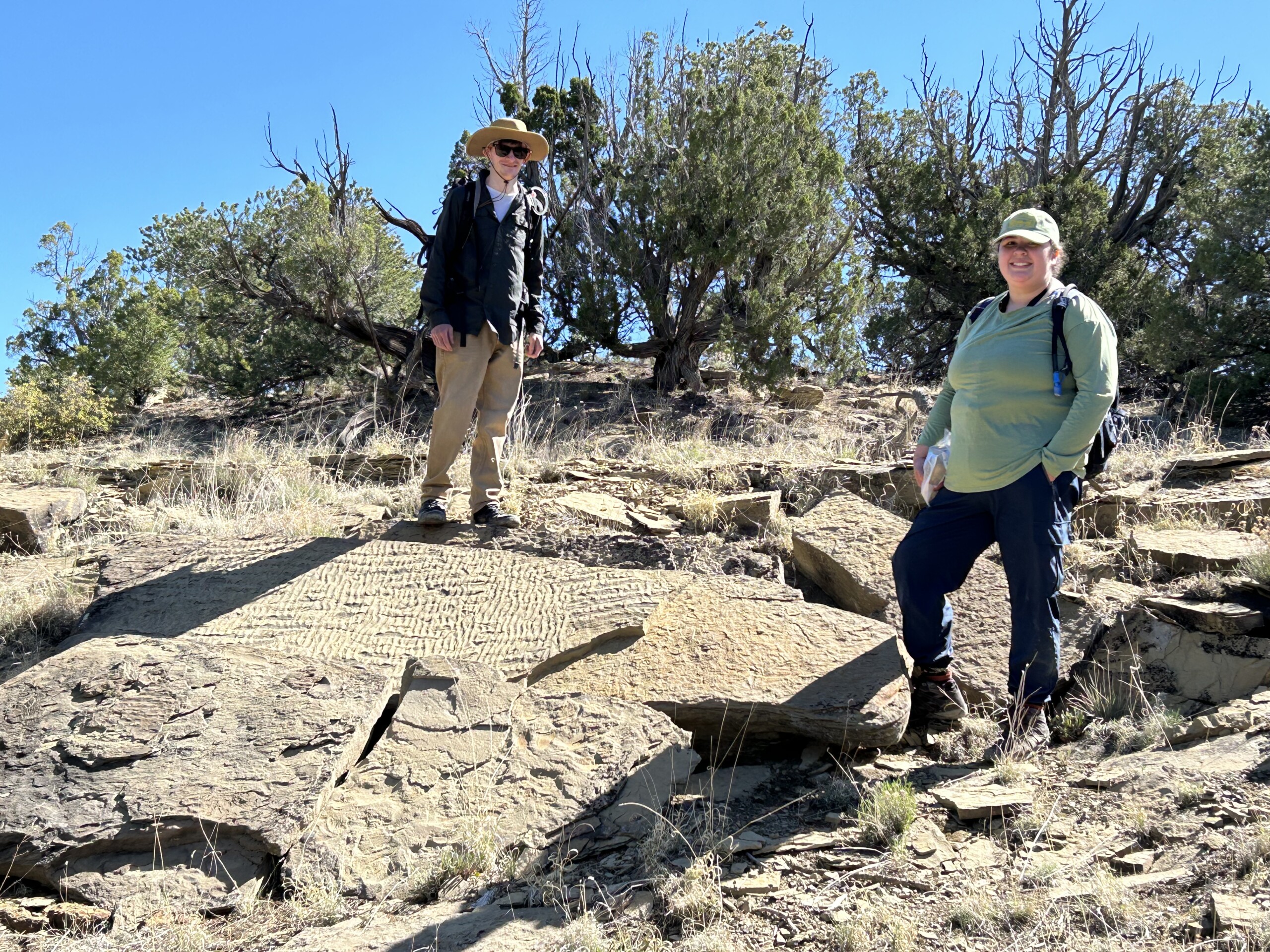
Dr. Jennifer Thines and NMSU Graduate student Shane Deacon on Crevasse Canyon Formation ripple rock sandstone
“I think the outcrops we have out here are really awesome,” said geology graduate student Thomas Valenzuela. “They preserve some of the latest part of the Cretaceous River systems that were flowing into the Cretaceous Seaway at the time. One of the cool stories that me and Brian have been digging into over the past two months and what Leo will be doing a lot of for his project is looking at paleo flow. We’re trying to understand what direction ancient river channels were flowing. The Reynolds Field Station is an awesome area for collecting these types of data sets. In my rocks from northern New Mexico, I have maybe five areas to get maybe three points worth of data. Leo can walk half a mile and have 600 data points.”
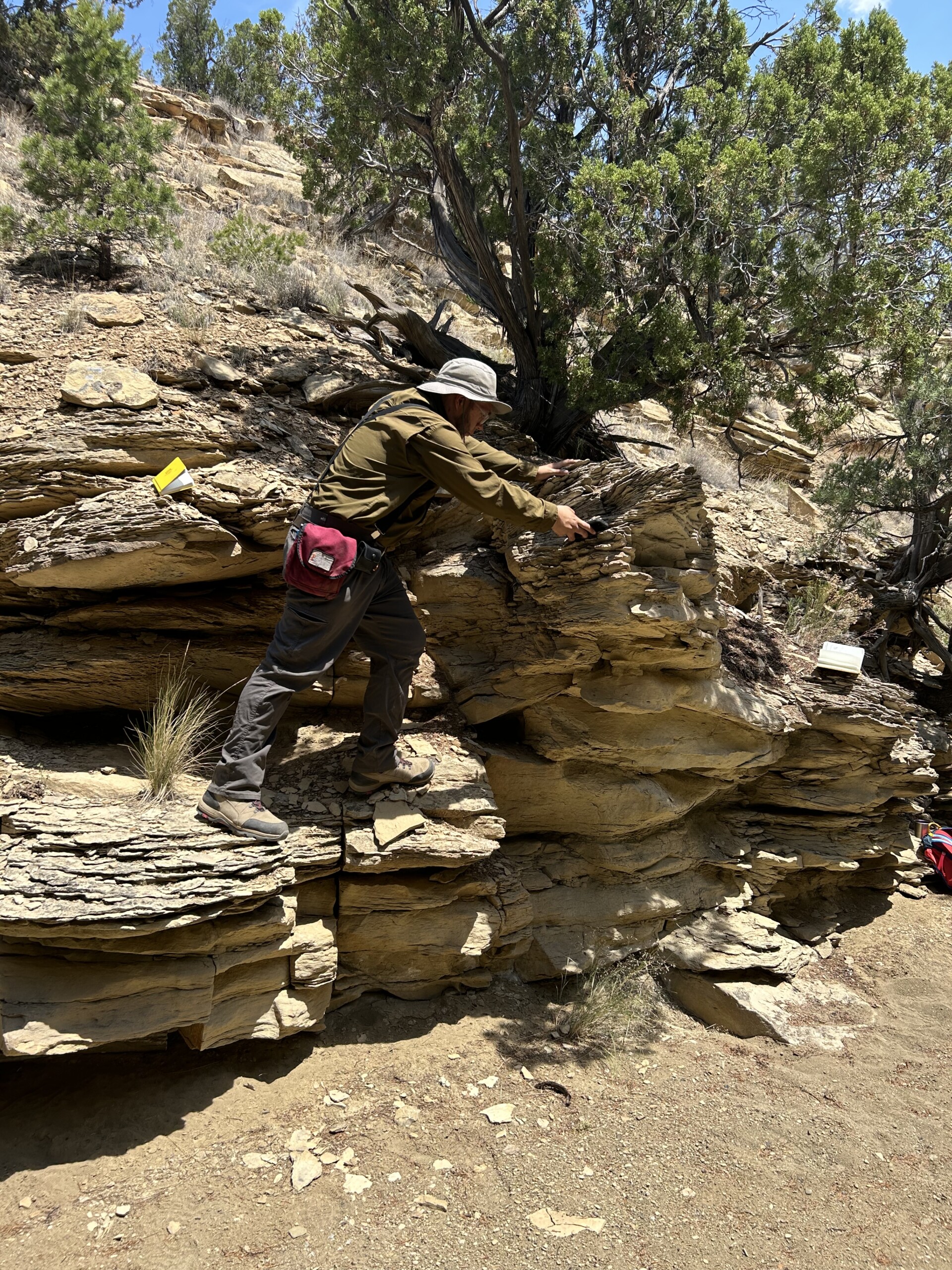
NMSU Graduate student Thomas Valenzuela taking current flow measurements in Crevasse Canyon formation sandstone crossbeds
“What’s kind of cool about this area is that it’s a relatively unformed part of this kind of broader Colorado Plateau region,” said geology graduate student Leo Kuyl. “It has a lot of sedimentary rock, or at least the rocks that I’m interested in. I’m seeing a lot of nicely preserved sandstones and mudstones. You have these beautiful cliffs that are formed by those sandstones that were deposited and then you have slopes where you see all your trees and vegetation. That’s where those finer grain mudstones are being deposited. It’s a window in time.”
“Geology is a field-based science,” McMillan said. “Geoscientists calculate models for many Earth processes, but field verification is essential to properly evaluate models. To make geologic field observations, one must think in 4D – the three dimensions plus geologic time. This is an acquired skill that can only be learned through fieldwork.”
In addition to working with NMSU, RFS plans outreach for K-12 schools. Reynolds also wants to offer field camps in other areas of study.
“RFS looks forward to expanding research, education and outreach programs in additional areas including biology, creative media and anthropology,” Reynolds said.
“A-Lan Reynolds is amazing,” said Thines. “It’s unheard of to have her build this field station to allow us to bring in so many faculty members and allow us to have so many students working on field projects. The work she’s done in the last year to build up the field station to a world-class facility to conduct field research is really spectacular.”

RFS is pleased to announce the Reynolds Field Station booth at Geological…
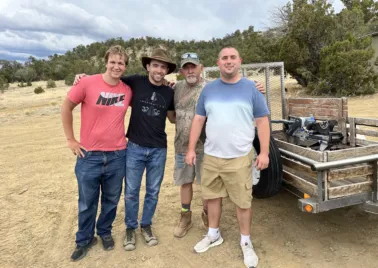
RFS hosted three young professionals who went to high school together, but…
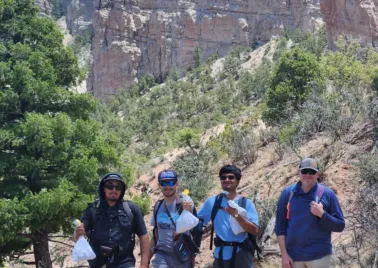
The Reynold’s Field Station (RFS) hosted its first official geology field camp…

INTERESTED IN LEARNING MORE?
We are passionate about the sharing the amazing environment and scientific learning opportunities at the Reynolds Field Station. We encourage you to Contact Us about ways you and your institution can participate in exploring and contributing to the science and appreciation of this natural wonderland. We are a 501(c)(3) public charity and welcome donations that will enable travel expenses, grants and scientific equipment for learners who need assistance participating at the Field Station.